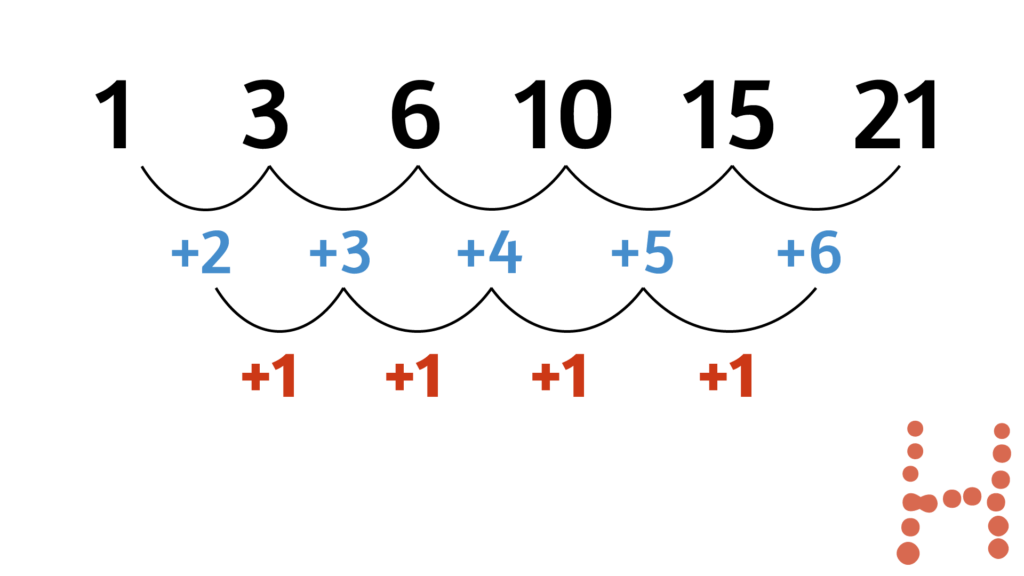Sequences are very easy to crack once you get the hang of them.
Example question
Take the sequence 1, 3, 6, 10, 15, 21. Work out the next two numbers.
To work out the next two numbers, you need to work out how much is added to the sequence every time. You can do this in the method shown in the diagram below:

The diagram tells us that the numbers go up by 2, 3, 4, 5 and 6 each time. If you work out the difference between those numbers, you’ll find that the difference between the numbers goes up by 1 each time.
In this sequence, the rule to get the next number is multiply by 2, then add 3. Write the missing numbers.
–, 46, 95, —
The 1st and 4th numbers are left blank, with the 2nd and 3rd numbers being 46 and 95. To find the 1st number, you need to divide 46 by 2, which gets you 23. The first number is 23.
23, 46, 95, —
Now we need to find the fourth number. To do that, we simply multiply 95 by 2 which gives us 190. We then add 3, which equals 193. The complete sequence is below:
23, 46, 95, 193
Or you can download a printable worksheet here with the answers here.